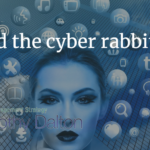In the past year I have attended more conferences, courses (on and off-line) seminars and webinars than possibly in the whole of my previous career. I have read articles , periodicals, blogs, newspapers, e- zines, magazines and worthy tomes. I wouldn’t consider myself to be especially perceptive generally, but I could see a year ago as markets crashed and millions of people were impacted by events outside their control, that for my profession, adapting to change would be key to prepare for any upturn.
So there was a strong need to get up to speed. I identified pretty early on and somewhat unusually quickly for me, the strength of what is now called a “weak network”.
The strength of a weak network
In my role as a coach and an executive search professional I constantly come across individuals erecting barriers to embracing change in the way business is now being done across many sectors, but especially in recruitment and search on both sides of the process. People who are active in these new media tend to endorse each other’s efforts and so are essentially preaching to the choir. But in the general congregation I have noticed undoubted resistance and scepticism.
Impact of social media
Last week I attended the AESC European Conference (Association of Executive Search Consultants) where a number of speakers eloquently shared their thoughts and studies of different economic changes and the impact these would have on talent management and executive search in Europe. @GeorgKolb of Pleon, Deutschland, gave a great and dynamic presentation on the impact of social media on the sector and there was some talk that executive search could be reduced to a job matching process by these new developments.
Wide networks
Many executive search consultants still rely on their Rolodex contacts to facilitate introductions to potential candidates. But at the same time global internet sourcers, who could be based in India, Eastern Europe or anywhere else in the world, are equally active using Boolean Strings to remotely identify passive and active candidates they have never even heard of, from information that is in the public domain via the internet. These might be professional networks, or any other source.
Many of us are not aware that we all constantly leave our footprint in cyber space and are visible and traceable, whether we or not we want to be, or even like the idea. The profession is in the throes of a major refocus when as a recruiter I am possibly more likely to identify a candidate from social media or on-line network than my immediate physical one. My LinkedIn network, modest by some standards, has a global reach of over 18 million people. Most of them could care less about me until maybe one day, they appear in a search and I approach them for what might be their dream job.
The chances of me reaching that number of people through traditional networks are I’d say…. zero.
Cyber Sleuths
There is now a new breed of recruiter called a Cyber Sleuth! Such is the power of having a wide “weak ” network Shally Steckerl of Arbita has been arbitrarily stopped by LinkedIn from extending his network any further now it has reached 30000 LinkedIn users. One client Nils Oudejans has voluntarily limited himself at 26000 connections before any restrictions are imposed on him.
Another strength of a weak network is that it is democratic. You don’t need to be in the right club or church, have attended a certain school or worked in a specific company to get connected. Generally if someone has a strong and professional on-line presence, adds value and communicates in an appropriate way, they are accepted. There are no barriers to entry based on academic qualifications, age, gender, race or sexual orientation. There are no exorbitant subscription or membership fees. Porn and affiliate marketing spammers are treated the same as they would be in any network – excluded! People who don’t engage get left out. Same as in a physical network.
Need help building your strategic network? Check out the individual coaching programmes
Personal Branding
On the transition side I coach clients specifically in raising their on-line visibility, now called Personal Branding. Many are conservative and concerned because they don’t know ” these people” who contact them via social media platforms and who invite them to “be- friend” “follow” or “connect.“ It’s sometimes an uphill struggle to explain that it doesn’t matter if they haven’t been physically introduced and no one cares about that any more, and it’s about the added value of the contact, however remote.
Do any of us know absolutely everyone in our alumni associations or golf clubs? No, of course not. This is no different. On-line connections can actually be just as meaningful and sometimes more so, than physical ones. It’s about being visible, not just to them directly, but to their networks and being seen to offer quality.
Wide networks can be narrower than you think!
I can only speak from experience. I have more daily contact with some members of my virtual network than even my family, who I suspect might not understand what I do! This isn’t even a generational issue. My own Gen Y son, is completely resistant to the idea that recruiters access Facebook to search for entry-level candidates and will not use it for professional purposes. His new LinkedIn photo bore a striking resemblance at one time to what I can only describe as a tree. Happily this has now been changed.
I have baby boomer executive search colleagues with limited on-line presence who balk at the idea of filling out their profiles and others who resist using keywords in all their presentations, despite all the evidence that this is what they need to do.
When I met @MarionChapsal whom I connected with via Twitter, my brother @MD60 was issuing ominous warnings about potential axe murderers lurking in cyber space. As 1 in 6 marriages today in the US begin with an on-line connection, the way adults initially interact before physically meeting for the first is time is constantly changing. Not that I wanted to marry Marion by the way, beautiful though she is – it was just an illustration of changes going on! As we saw in the backlash against Jan Moir, after her ill advised article about the death of Stephen Gately, Twitter has the potential to be more powerfully viral than swine flu.
Best combination for best talent
I am in no way dismissing traditional executive search and recruitment strategies for identifying the best talent. They are invaluable skills. At some point telephones have to be picked up and face-to- face interviews arranged, so for me on -line job matching is not the best option for finding high calibre candidates. Just as job seekers have to leave the security of their computers and exhibit strong inter personal skills.
But the combination of the old methodologies combined with the new cyber sleuthing skills, make a formidable combination for identifying the best global talent.






A very thought-provoking and interesting article. As a user of traditional marketing and PR in the past, I heartily agree with the power of these newer methods of reaching people.
“Another strength of a weak network is that it is democratic …” A Yes, and what I also love is that it is very relationship-based and in some cases values driven – two things that are important to me.
Thanks Dorothy and see you on Twitter!
Zoe
Thanks Zoe – I absolutely agree. It’s about relationships created out of value, which I think is a huge advantage.
Very interesting Dorothy. There is tremendous power in these networks. The best yet often overlooked pathways to future success may be in a both/and, integrating the old with the new to create an entirely transformed approach, rather than an either/or approach, which all too often casts off the traditional in the name of progress.
A perfect read to get my brain in gear this Monday morning! Thanks!
Susan – thank you. I always feel that the most effective change comes from incorporating the best of old school methodologies with the new. Otherwise we end up throwing the baby out with the bath water – as the old saying goes!
This is an exceptional post, Dorothy. I am going to add it to my delicious bookmarks and share it with my classes on personal branding. They need to be aware that folks are searching online and that is GOOD news. I you know business is going to do something, you can anticipate them doing it and be prepared. Thanks! Bret
Thanks Bret for your comments. I am working on something for graduates and when I have finished it will send you the link.
Hi sis. Everything you say about social networking is true, it’s an amazing way to extend your network and as you know I use it too. I still stand by my words of warning to anyone meeting someone in person that they have previously only met on line. You absolutely should make the effort to check the legitimacy of any contact, and if you are in any doubt at all meet them in a public place, where there are other people about. Sure I may be paranoid, and 99.9% of people will be legit but there are a lot of bad guys out there and adults can be groomed as well as children.
Hi Bro – you are absolutely correct and for anyone reading this I wouldn’t want to trivialise the caution needed in making any on-line connection actual. Mike, you have deep experience in internet security ( see http://www.yoobug.com) and a knowledge of fraud and scams that are beyond my comprehension in terms of inventivness. So any comment I have made, relates to fraternal concern and only to that VERY specific incident of meeting Marion. Anyone, especially young women, as you have privately emailed me should be especially prudent. Public places, let people know who you’re meeting and so on. I’m sure that even men have to be cautious too – Mike maybe this is somthing Yoobug could give advice on as the world changes at such a rapid pace. Sweet to be concerned. Thank you . Hugs
Excellent angle, Dorothy… and, of course, with a wider net to scour there’s likely to be more appropriate candidates. It’s also occurred to me that the calibre of candidates re ethics and values can’t be hidden. The offguard moments of their internet footprint will show how congruent they are!
Thanks Sharon for your comments. I am not totally sure that people outside the search and sourcing profession understand how candidates are located. One of the main sources is currently via social media and professional networks: LinkedIn, Viadeo, Xing, Naymz etc. With regard to on-line behaviour I have also covered that in my post https://dorothydalton.com/2009/07/09/hows-your-cyber-footprint/. We are all traceable now! Even my 85 year old Mum on Facebook!
Well balanced post, Dorothy.
And thanks for the reference,
Georg
Thanks Georg – it was a great presentation.
Pingback: Can you risk not having a career strategy? « Dorothy Dalton
Pingback: Small decisions can create BIG changes « Dorothy Dalton
Pingback: How many LinkedIn connections do I need? - 3Plus International
Hi Dorothy, I completely agree with this and have some stories that share that might bogle the mind for those sceptics you mention – in my job (consultancy in the international development field) I have used LinkedIn Recruiter numerous times over the course of this year to find profiles as diverse and specific as former Nepali police officers who have worked in Bangladesh, to Ethiopian-Somali monitoring and evaluation experts. And many times, I have found what I’m looking for, made contact, requested a CV and put someone forward for a job. This is saving so much time too.
That said, what I have found is that quality is less guaranteed this way; you might get the right goods on paper but the person’s intangible attributes are unknown. I find going to consultants we know and have worked with before to get recommendations is still more reliable, although perhaps not as instant.
Pingback: LinkedIn – date ili deal? | Women in Adria
Pingback: 5 reasons job seekers should volunteer | Dorothy Dalton
Pingback: 5 reasons job seekers should volunteer | PTPI Belgium
Pingback: 3Plus International – How many LinkedIn connections do I need?
Pingback: 3Plus International How many LinkedIn connections do I need? - 3Plus International